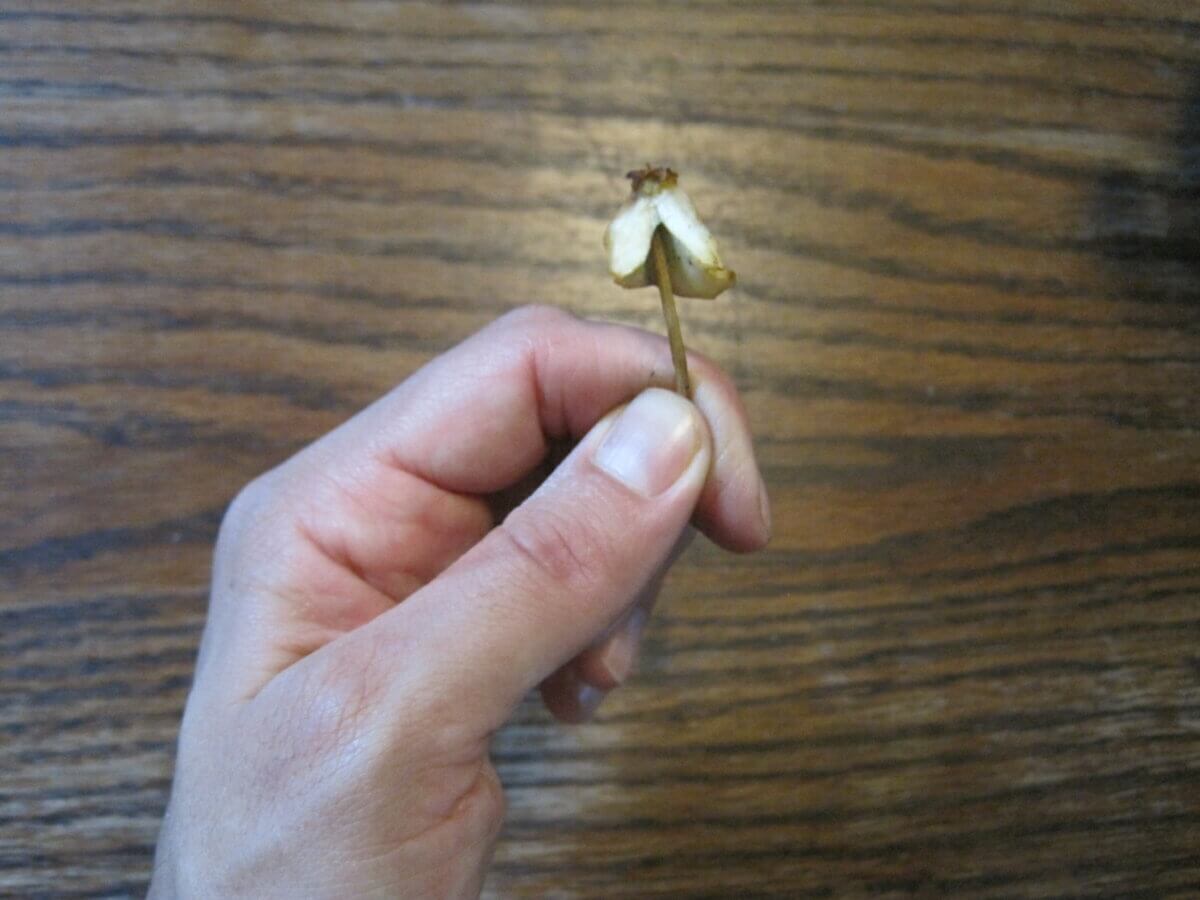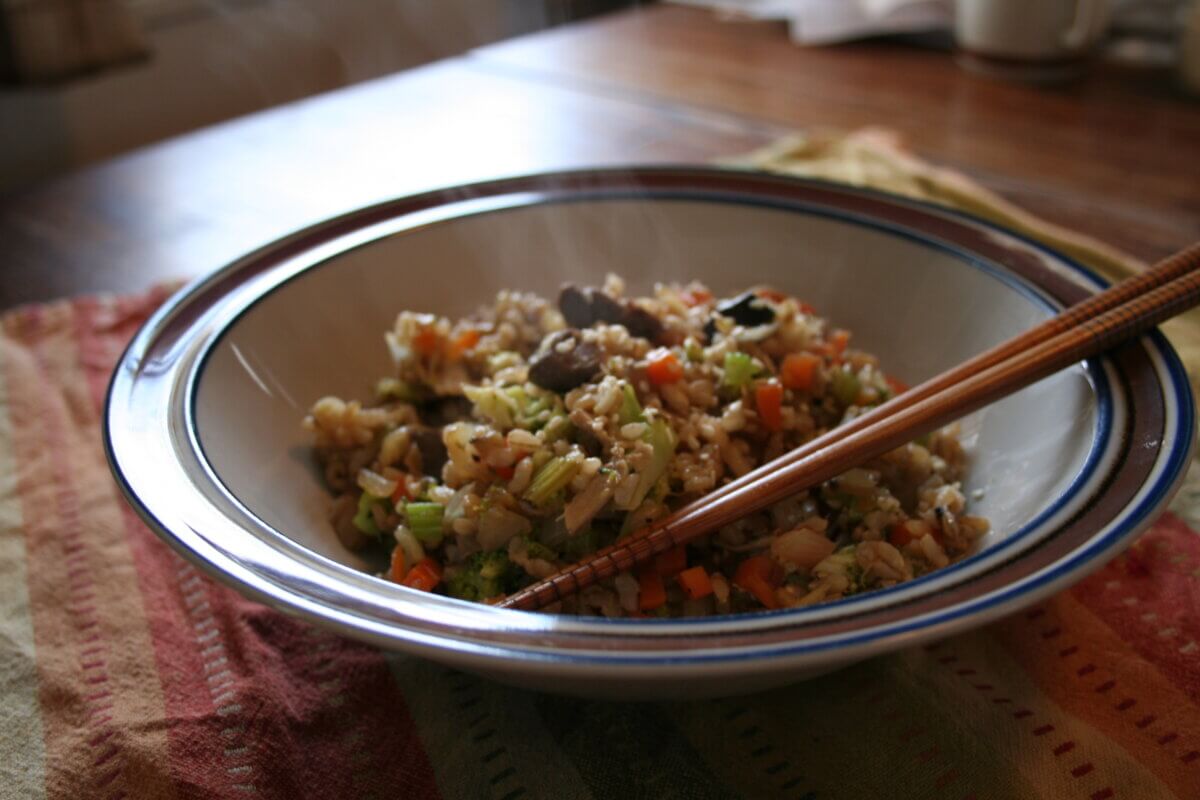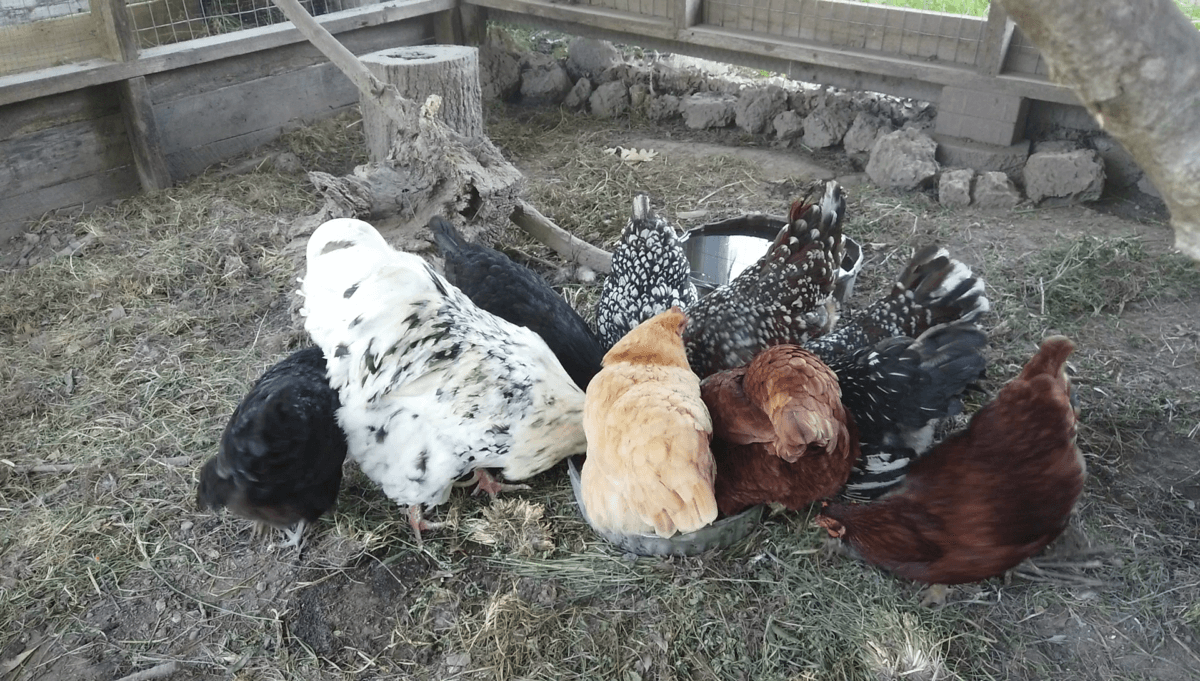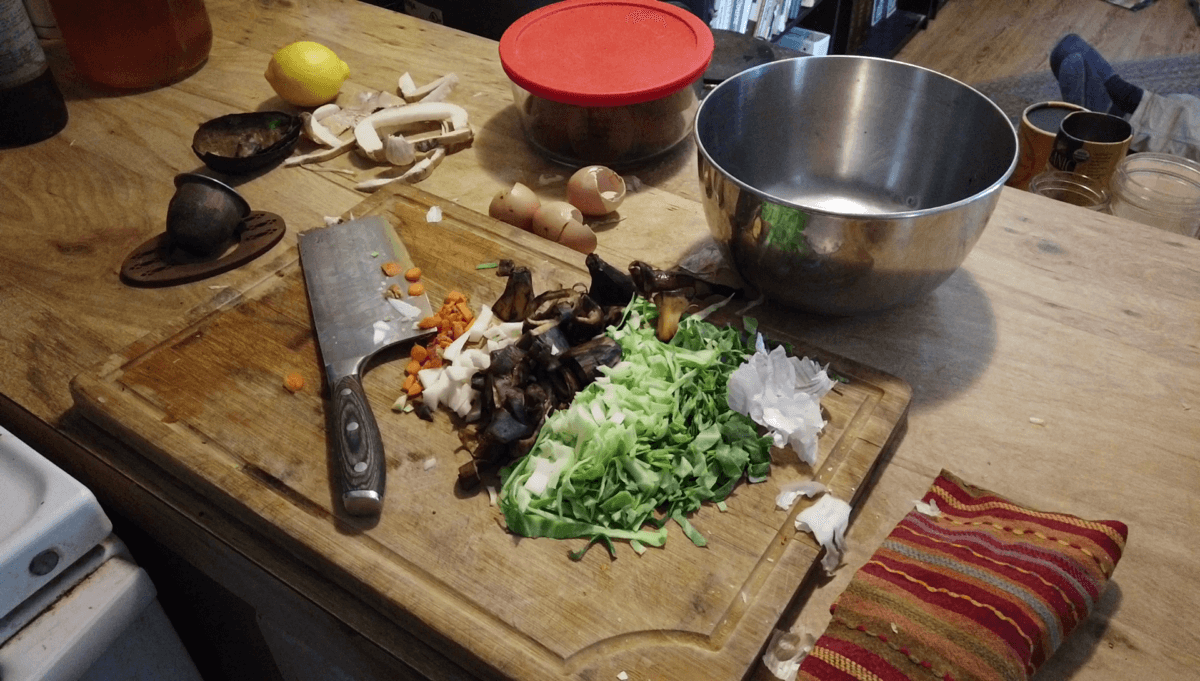Like many other college students (back in the day), I was a summer camp counselor. Though I loved the job, there was one specific task I absolutely hated. It wasn’t the cheesy skits, it wasn’t dealing with sleepwalking campers, and it wasn’t screaming those stupid camp songs for the 10 thousandth time. It was cleaning up wasted food after meals.
At camp, uneaten food was tossed in a specific garbage bin, then hauled to the dumpster. The bag was always grossly overloaded, dripping with curdled milk — and the smell … ugh! I still shudder when I think of it. It wasn’t the olfactory disgust that bothered me most, however. It was the massive amount of waste. But when you’re dealing with 300 plus kids a week, the focus was on making sure they ate and drank something, and food safety rules meant anything that left the kitchen couldn’t go back.
At camp, the uneaten food bin was as much a fact of life as horses in the barn and the water slide. And the truth of the matter was the majority of those kids were accustomed to wasting food at home.
That doesn’t have to be the case in our homes, though. When you’re concerned with self-sufficiency or living with mindful responsibility of your resources, food waste is not an option. For many of us, choosing to cook and eat without waste isn’t just a logistical issue. It’s a moral one.
6 Food Waste Reduction Tips
Here are some tips for the thoughtful household that’s looking to reduce or eliminate food waste from their daily practice.
1. Don’t Eat Your Apples Like an American
Apples have been associated with American culture for hundreds of years, and for good reason: They are inextricably woven into our history and food culture from Johnny Appleseed to Amish Apple butter. But for all our longstanding associations with this sweet and shelf-stable tree fruit, we have somehow figured out how to eat them in the most wasteful way possible. How many times have you seen an apple core thrown in the trash leaving ample edible flesh around the core, top, and bottom? I’d wager over 40% of apples are consigned to the trash, rather than where they belong (in a stomach).
Thankfully, there’s a better way, even though you’re going to look like a weirdo (or maybe an exchange student) while doing it. Eat your apples from the blossom end, holding the stem in your hand from below. You’ll find that when apples are consumed from bottom to top, the core is rendered nearly indistinguishable. The seeds add a pleasant, almond-like burst, once you get used to them, and all that’s left at the end is a bitty little stem.

You may ask “Don’t the seeds have deadly cyanide in them, though?” Technically, apple seeds contain a substance that produces cyanide (not cyanide proper). It is present in such minute amounts that you’d need to eat hundreds of apple seeds in order to get anything close to a dangerous dose. Given the relatively nonexistent risk and potential benefits, I only spit out apple seeds when I plan on putting them in the soil.
2. Eat the So-Called “Trimmings”
“Discard green tops of carrots. Trim green parts of leeks and discard. Cut off celery leaves and discard.” How I hate those instructions in recipes. So often, the reason for the traditional removal of these green bits (such as in the case of leeks) is that they’ll add too much color to the finished dish (vichyssoise, for example, is supposed to be an immaculate white). Well, as a stubborn peasant who doesn’t give two figs for how perfect my soup looks, but rather how nutritious and tasty it is, I make a habit of eating as much of every vegetable as possible.
You may not have realized that most parts of veggies are totally edible and a shame to waste. Here’s a short list that should go into dinner, not the trash bin.
- Carrot tops: tasty in a soup or used for pesto
- Beet tops: use like you would spinach — they’re in the same family, after all
- Leek greens: surprisingly tender until the last inch or so. Excellent stir-fried and added to soups
- Celery leaves: tasty when added to whatever the celery ribs were used for — also good in soup
- Fennel leaves: great when paired with fish, they make a sweet brewed tea, and can be used for pesto
- Onion leaves: green tops of onions are delicious and taste like green onions (because they’re the same thing)
- Watermelon rinds and seeds: thrifty pioneers knew that watermelon rinds made good pickles — no reason to stop that excellent tradition
- Broccoli stems and leaves: If there was a wild plant that grew such a succulent, edible stem as broccoli, foragers would go nuts for it, include them in soups or other finished dish
- Cauliflower stems and leaves: once you’ve used the florets, clean dried bits from the base, toss with oil, and roast until nutty and brown — you’ll lament what you’ve missed to that point
3. Learn Traditional Leftover Recipes
Not long ago, staple items like stale bread or day-old rice were the common product of folks who cooked their own daily meals. As a result, peasant cultures the world over have spent the past hundreds of years refining ingenious ways to repurpose so-called leftovers into nourishing, delicious, waste-free meals.

In a weird flip of history, these folk dishes leapt to eminence when they became dishes made by chefs on TV. Suddenly, we found ourselves toasting fresh bread before using it in panzanella or pain perdue, and cooling fresh rice in the refrigerator for fried rice. Once you start really cooking most of your meals, you’ll find yourself with inevitable leftovers, and the true nature of these recipes starts to make logical sense again.
Here are some links to leftover-based meals that are an excellent addition to anyone’s repertoire.
- Ways to use leftover rice
- Ways to use leftover bread
- Ways to use leftover food
- Ways to use food that you might throw out (but shouldn’t)
Wasting leftover foods is really a luxury that those seeking to live lightly on the earth (or on their pocketbooks) can’t afford to indulge in any longer.
4. Teach Your Kids to Eat Their Food
The heading of this section is enough to raise more than a few parent hackles. I know it can be infuriating, frustrating, and nerve-wracking when you have to figure out how to feed picky kids. Having some random lady on the internet say “Make them eat it” really doesn’t help. For the record, I’m not writing this section about children who have sensory issues, dysphagia, or true food aversion. That’s an entirely different challenge, and you have my full support as you try to figure out mealtimes on your own terms.
So let me explain. If you’re willing to sit through an anecdote, I’ll try to make it worth your while. Before my back-to-the-land days, I worked for years at a week-long retreat center for children (not the same as the summer camp in the intro) both teaching them and preparing their food. We hosted more than 80 schools a year, working with thousands of children. Part of our work was to educate children about healthy eating and avoiding food waste.
We collected and weighed the children’s wasted food at the end of the first meal. Whatever number of pounds we collected, we gave them goals and tips for reducing food waste through the week. By the end of the week, we usually got through several meals with zero pounds of food waste (and great celebration).
How in the world were we able to do this? There were four main ways.
- We all ate together, at round tables, chatting happily about the day and keeping the meal fun.
- The adults weren’t picky about what we ate, and the kids could see it.
- We encouraged them to focus on the collective goal of Zero Waste (and had a camp song about it).
- Since we were actively fighting against it, we allowed the kids to feel guilt when they chose to waste food (and didn’t stop their peers from commenting on it unless they got mean, of course).
Granted, putting the kids in an unfamiliar environment with unfamiliar people and unfamiliar food, we had them in a disorienting circumstance that the busy family at home can’t recreate. But it did teach me that, for many of these kids, food pickiness was reversible through time, effort, and most of all, positive adult interaction. I hope that story can give you hope and motivation that kids can learn to eat all their food (and like it, too), but it requires a collective family effort to make it happen.
5. Save Bones and Bits for Stock
If any of you are cooking minded, I’m sure you’ve heard about the glowing merits of bone broth somewhere online. Many folks go out and get bones from a local butcher to toast up and brew in a healing, collagen-rich liquid. But you can build up a bone broth “cache” in your freezer anytime you eat bone-in meat. Whether you’re at a restaurant eating a T-bone steak, or at home picking meat off a home-raised chicken, save any and all bits that aren’t consumed: skin, gristle, bone, and uneaten pieces of meat that cling to the bones. Throw all of these into a freezer bag and don’t worry about them being a bit chewed on by other members of your family. They’re going to be boiled to smithereens soon enough.
Once the bag is full, empty the contents into your largest stock pot, add a few bay leaves, celery seeds, and a healthy amount of black pepper, and cover the contents with water. Some folks add a few tablespoons of vinegar, to help dissolve calcium from the bones. Bring the pot of scraps to a boil, then cover and reduce to a bare simmer for at least two hours. The longer you can let it simmer, the better the resulting broth will be. If you have a woodstove, stick it on the back of the surface through a cold winter day, and check the water levels every hour or so to make sure it doesn’t reduce too fast.
The resulting broth, strained from all the solids, should set up like a jelly once cooled — a sure sign that you’ve successfully dissolved “the good stuff” from the bones. Freeze or can it in a pressure cooker to save for the next time you need broth in soup, stew, or just for sipping when you don’t feel good.
The exhausted bones can be added to a humanure composting system or buried in the garden. Though it’ll take a few years to break them down, they’re full of nutrients which won’t yield anything else for your kitchen, but it would be a shame to send them to a landfill.
6. Get Some Chickens

Even if you can’t figure out a way to repurpose leftovers, it doesn’t mean your birds can’t handle them. Chickens are great at handling many leftover food scraps, turning them into rich droppings for the compost, tasty fresh eggs, and nutritious meat. I had a compost pile when I lived in the city. When I moved to my land and got a poultry flock, I found that the chickens handled 90% of the food scraps that used to go in that city pile. Now I have no more compost pile (no more freeloading raccoons, either), and a flock of cackling birds. It’s a nice exchange.

If you home-cook from scratch, you’ll have good use of your birds, as they can eat most fruit, grain, meat, and vegetable scraps. If you do a lot of take-out or prepackaged meals, however, you’ll have to be careful. Most processed foods are worse for your birds than they are for you.
Here’s an incomplete list of what chickens shouldn’t eat.
- Chocolate
- Moldy food
- Citrus peels
- Avocado rinds and pits
- Bakery made with white flour
- Uncooked, dry, or raw beans
- Anything heavily salted
- Snack foods (if you have to open a box or bag to get it, it’s probably bad)
I hope this list has given you food for thought as it helps you along the way to being less wasteful, but my ideas are only a start. What ways have you found to reduce food waste in your home, community, or workplace? Drop your ideas and stories in the comments below.









































One of the best ways to use leftover scraps from veggies and fruits is to put them into the compost bin. That will reward you with nutritious soil to top up and work into your garden.
Freeze the leftovers (even onion skins) and add to soups and stocks.
Save peels and cores from fruits and make vinegars.
Save the seeds from heirloom plants such as tomatoes to plant for next year. Free plants!
And one of my favourite ways to use scraps it to plant them and re-grow new plants. For example, if you plant the ends of green onions (root ends down) soon you will have new green onions. You can plant the eyes of potatoes to produces potato plants. You can take bits from so many veggies and grow new plants and you can root herbs, etc. as well.